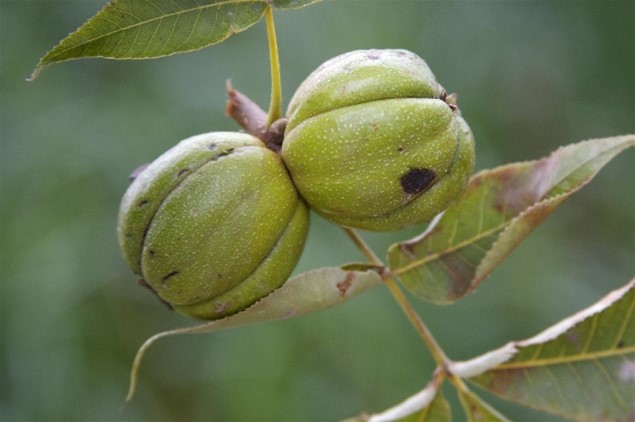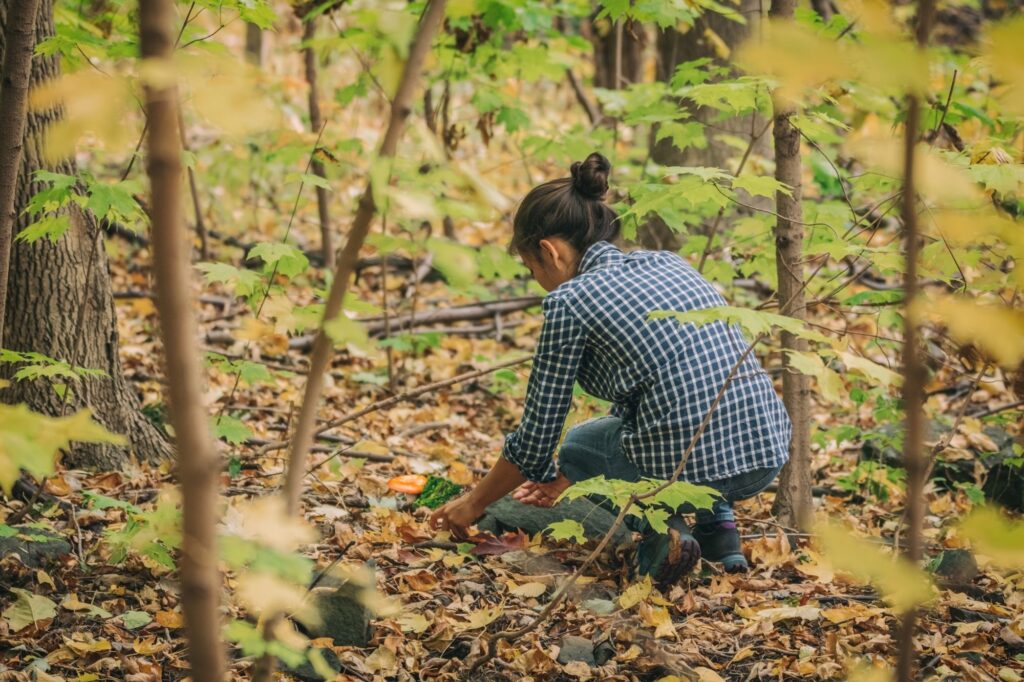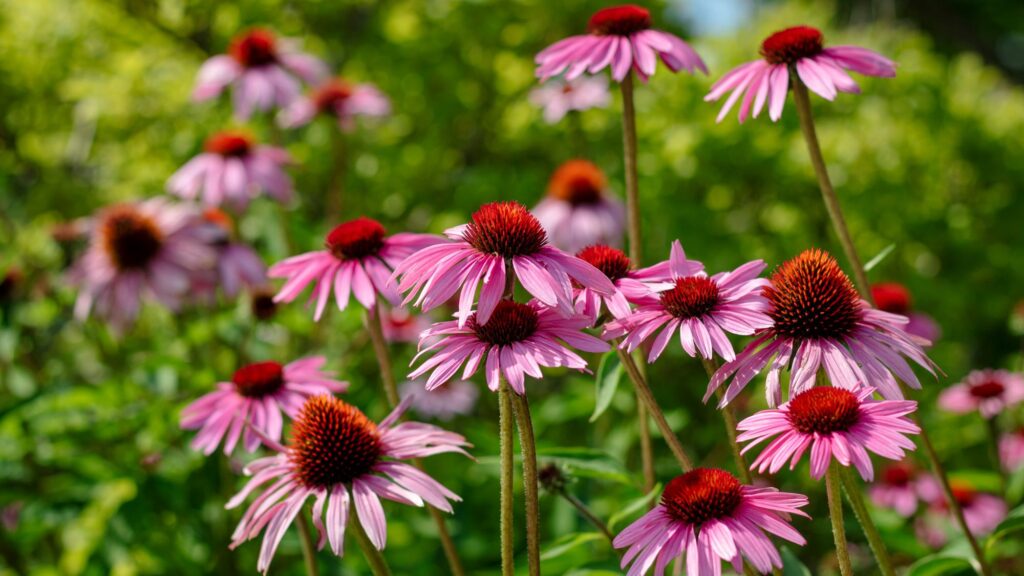
Powell Gardens is Nuts About Fall Foraging!
In the Midwest, fall is a time of abundance for the forager. As pick-your-own farms and pumpkin spice drinks pop up across our community, don’t forget fall has many options for delicious foraging that exists in our own backyards! As foraging grows in popularity, Powell Gardens provides resources for foraging in the Midwest region, including seasonal resources like this Midwest Foraging: Fall Guide.
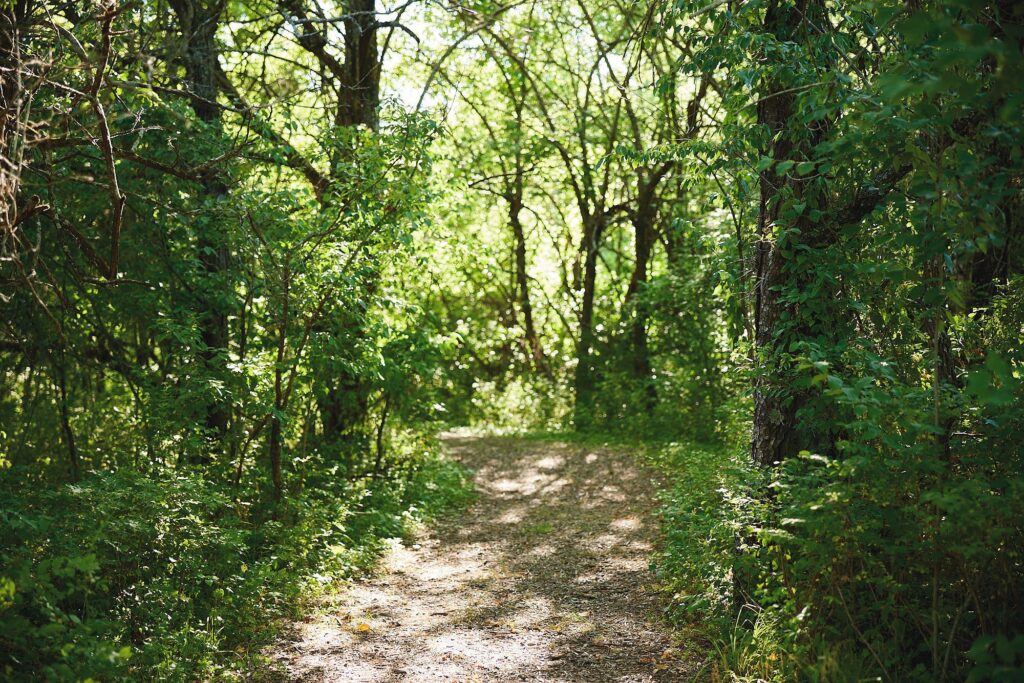
Foraging in the fall is perfect for collecting fruits like apples, pears, and cranberries, which have so much potential for tasty cobblers and finger food at your next holiday meal. Nuts are also in prime season for harvesting and can be a great savory choice for protein.
After the harvest, what has been foraged can be processed and saved for many months. Although it is more work now, the wild edibles that you gather will make for many delicious delicacies during the winter months. Your family will appreciate these treats during the busy season to come! Foraging in the fall can also be a fun activity to do with naturally curious young children.
At Powell Gardens, we have seen a growing interest in foraging over the past several years and want to provide you with resources to begin your foraging explorations. With our Midwest Foraging exhibition, we’ve worked with our expert horticulturists to create a list of fall’s best forageable items – all local to the Midwest!
Below you can find a list of these items and instructions on where and how to harvest, as well as different cooking or practical uses of the plant!
- Black Walnut
- Hazelnuts
- Pawpaw
- Persimmons
- Shagbark Hickory
NOTE: This post is created in collaboration with Powell Garden’s Midwest Foraging exhibit. To learn more about the exhibit, visit powellgardens.org/Midwest-foraging. Foraging is not permitted on Powell Gardens property. In the interest of public health, safety, and in respect of our conservation efforts, all participants are expected to appreciate this content for educational purposes only at Powell Gardens.
Black Walnut (Juglans nigra)
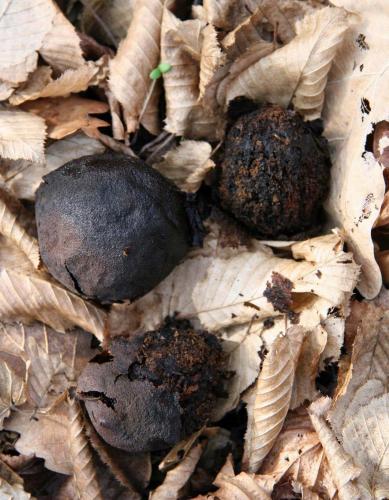
Where: Grown in rich soil in deciduous woods, the black walnut is Missouri’s most valuable tree due to the high price they draw on the market.
Harvest: The nut is covered in a thick husk, which takes time to process. Always use gloves when processing black walnuts.
Use: The nut meat can be eaten raw but is also delicious in any recipe calling for walnuts.
Hazelnut (Corylus americana)
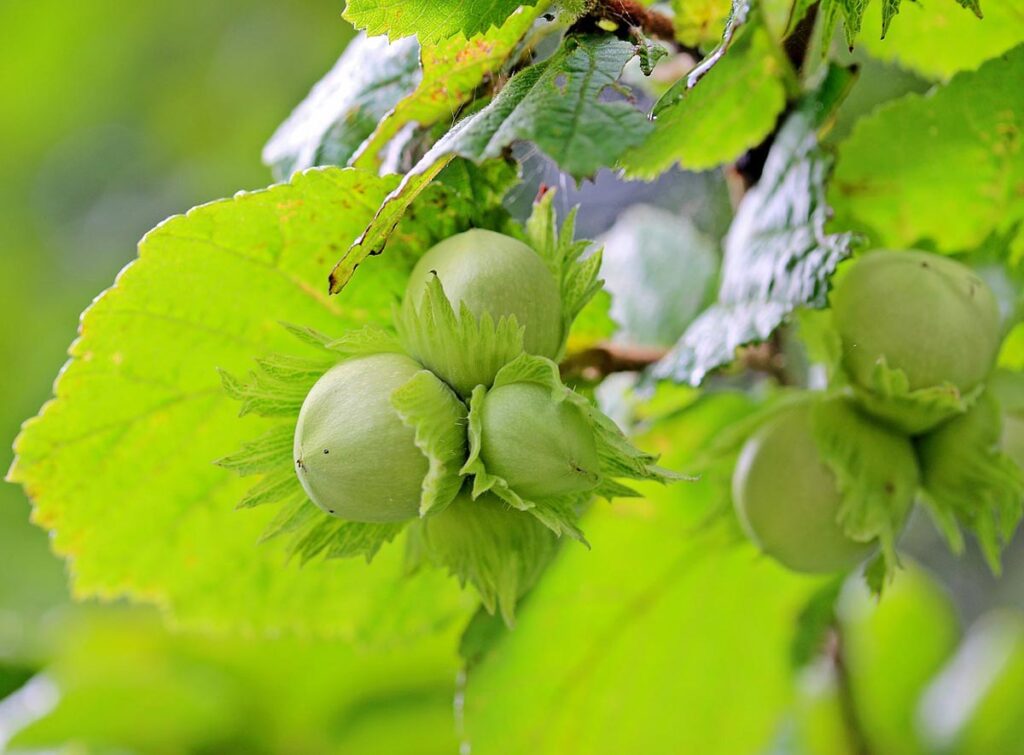
Where: Found in upland prairies, savannas, glades, woodlands and woodland borders, upland forests, bases, ledges, and tops of bluffs, banks of streams and rivers, and margins of ponds and lakes, also in moist or dry thickets along roadsides and railroads.
Harvest: Nuts will begin to fall and be ready for harvesting in late September and into early October. Gather nuts quickly before the squirrels. Hazelnuts should be dried thoroughly in their brown hulls and then stored in a cool dried place until use. Remove the sticky bracts with gloves before shelling and use.
Use: Dry roasting hazelnuts increases its flavor and makes it easier to digest. You can make your own hazelnut spread by grinding up the nuts and adding cocoa powder. Use hazelnuts for recipes that call for almonds or pecans.
Pawpaw (Asimina triloba)
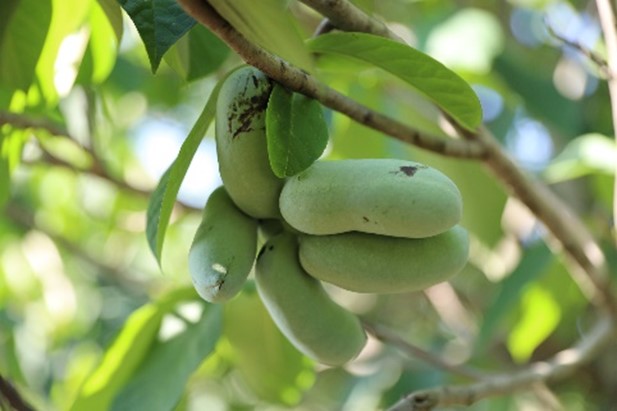
Where: Found along stream banks, openings in the forest, and in the understory of mixed hardwood forests in central and southern areas of the Midwest. Paw paws are an indicator of a healthy forest stand.
Harvest: Look for fruit that is very soft to the touch. It can be green or yellow. Fruit that has already fallen to the ground is best as long as there is no insect damage.
Use: Paw paws ripen very quickly once off the branch, freeze extra fruit to use later. The fruit should be peeled, and the seeds removed from the flesh. You can also freeze the fruit flesh to extend the life of the paw paw. It can be eaten fresh or cooked into baked goods. Makes a great custard. The taste is likened to a banana crossed with a mango.
Persimmon (Diospyros virginiana)

Where: Persimmons are a common hard-wood tree found across the lower Midwest and Southeast of the U.S. It is typically found in the wild on the edges of mixed hardwood forests or in the partial shade of thickets and along hedgerows.
Harvest: Collect persimmons that fall on the ground. Fruits that are tightly attached to the twigs are still unripe. Avoid fruit with insect damage or broken skin.
Use: Puree persimmon flesh into fruit leather. Puree can also be used in breads and other baked goods. The fruit is also tasty in jams, chutneys, or dehydrated.
Shagbark Hickory (Carya ovata)
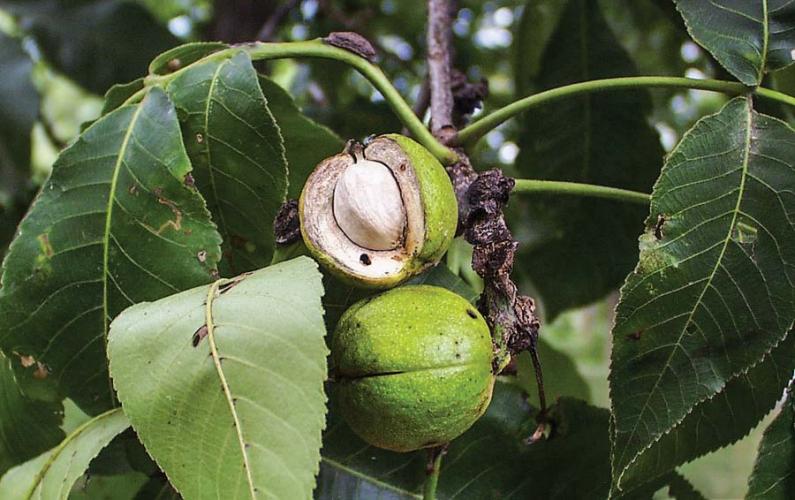
Where: This tree has tough wood, distinctive shaggy bark, and large, sweet, easy-to-crack nuts. It grows nearly statewide and is the most common hickory north of the Missouri River. It occurs in bottomland forests, in valleys along streams, and in upland forests on slopes and ridges.
Harvest: In the late fall, nuts will fall from the tree. Some will be in their green hulls, while others will separate from their hulls and show their brown shells. Gather nuts that do not have insect damage.
Use: Shelling hickory nuts should be done outside. Wear gloves and eyewear protection and carefully hit each nut with a hammer on the hickory’s seam lines. Roast the nuts before consumption. Hickory nuts provide a great source of protein and are delicious in baked goods.
To learn more about foraging in the Midwest, stay connected with Powell Gardens. Look for additional blog posts, exhibition updates, and classes coming soon. As Kansas City’s botanical garden, Powell Gardens will continue to provide resources for new and seasoned foragers in every season. Thank you for exploring and consuming safely this fall!
Related Posts

